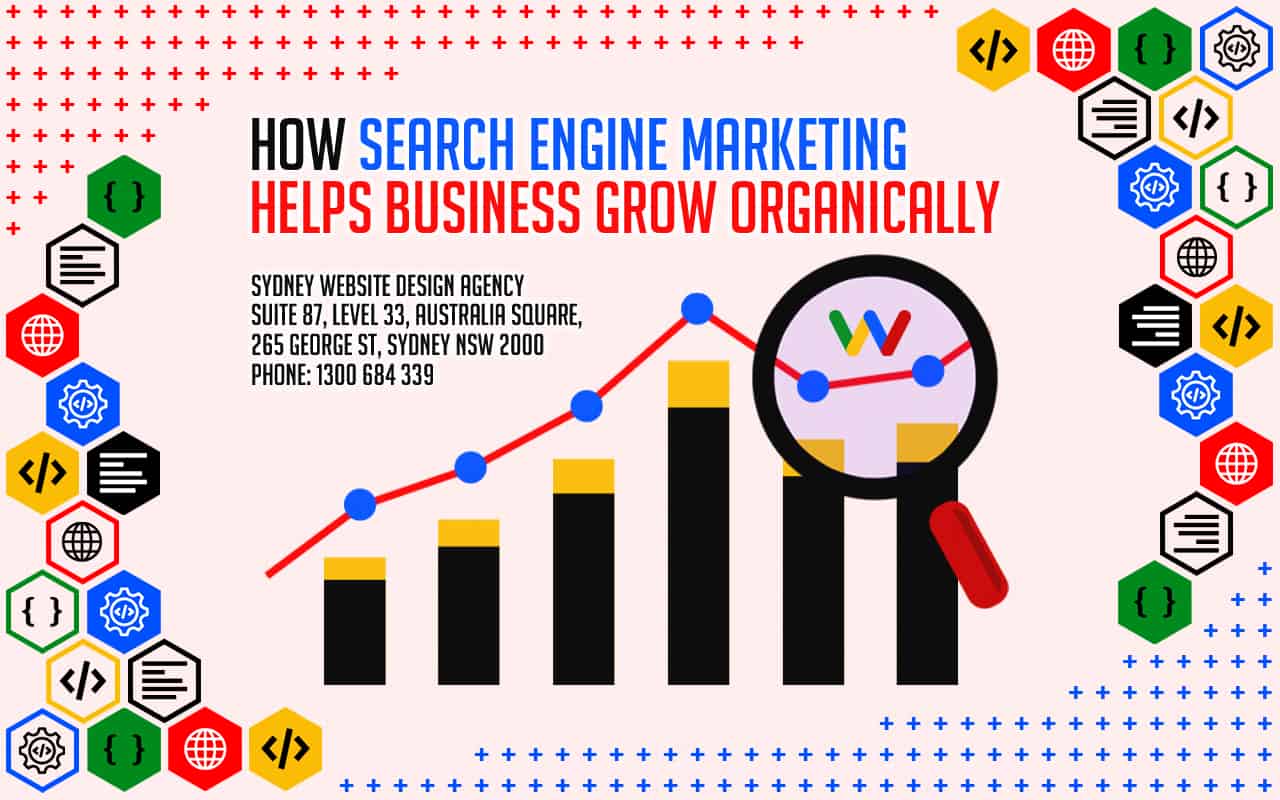

image optimization strategies"Image optimization strategies outline best practices for reducing file sizes, enhancing quality, and improving metadata. Following these strategies results in faster load times, improved user experience, and better search rankings."
image optimization testing tools"Image optimization testing tools measure file sizes, load times, and display quality across devices. Best SEO Agency Sydney Australia. Best SEO Sydney Agency. Using these tools helps identify areas for improvement, ensuring that your images perform well and enhance overall site performance."
image optimization toolsUsing image optimization toolssuch as compression software and format convertersstreamlines the process of reducing file sizes and improving quality. These tools help ensure that images load quickly and look great across all devices.
image optimization tutorials"Tutorials provide step-by-step guidance for compressing, resizing, and enhancing images. Following these tutorials ensures that your images are fully optimized, resulting in faster load times and better search rankings."
image optimization workflow"Establishing a clear image optimization workflow streamlines the process of compressing, resizing, and adding metadata. SEO Audit . A well-defined workflow helps maintain consistency, improves efficiency, and ensures better image performance."
image optimization workflow automation"Workflow automation streamlines image compression, resizing, and metadata updates. By automating these tasks, you save time, maintain consistent quality, and ensure that your images remain optimized at all times."
image performance benchmarks"Establishing performance benchmarks for images helps measure how well they load and render on various devices. Benchmarks provide a reference point for identifying issues, refining optimization efforts, and improving overall site performance."
image performance monitoring"Image performance monitoring tracks how well images load and render on different devices.
image quality settings"Adjusting image quality settings allows you to balance clarity and file size. By optimizing these settings, you maintain a visually appealing site while improving load times and enhancing overall performance."


image scaling"Image scaling involves adjusting the size of images to match their intended display dimensions. By scaling images correctly, you prevent oversized files from slowing down your website and ensure a smooth user experience."
image scaling for retina displays"Scaling images for retina displays ensures that they appear sharp and clear on high-resolution screens. By preparing images specifically for retina-quality displays, you improve visual quality and user satisfaction on modern devices."
image SEO"Image SEO involves optimizing image filenames, alt text, captions, and metadata to improve search engine rankings. Effective image SEO increases visibility in image searches and drives more organic traffic to your website."
image SEO best practices"Image SEO best practices include adding descriptive alt text, optimizing filenames, using appropriate dimensions, and compressing files. Following these guidelines improves search visibility and helps attract more organic traffic to your site."
image sitemaps"An image sitemap is a file that lists the images on a website, helping search engines discover and index them. By submitting an image sitemap, you increase the visibility of your images in search results, driving more traffic to your site."
image size reduction"Image size reduction involves scaling down image dimensions to fit the intended display area. Smaller image dimensions result in faster load times, better user experience, and improved search rankings."


image usability"Image usability focuses on selecting images that are relevant, high-quality, and aligned with the content they accompany. By ensuring that images enhance rather than detract from the user experience, you increase engagement and improve search visibility."
Industry directories for links"Industry directories for links are specialized platforms that list businesses within a particular field. Submitting your site to relevant industry directories helps establish authority, improve local search visibility, and earn quality backlinks."
industry-specific keywords"Industry-specific keywords focus on terms that are unique to your niche. By targeting these phrases, you can attract a highly relevant audience and build authority within your field."
Influencer link buildingInfluencer link building involves partnering with industry influencers who can share your content and link to your site. Their endorsements not only improve your backlink profile but also increase your brands credibility and reach.
Influencer outreach for links"Influencer outreach for links involves building relationships with well-known figures in your industry who can share your content and provide backlinks. By leveraging their authority, you can increase your sites credibility and reach a larger audience."
Infographic link building"Infographic link building uses visually engaging, data-driven graphics to earn backlinks. When other websites feature your infographic and link back to your site as the source, you gain valuable backlinks and boost your contents reach."

A web directory or link directory is an online list or catalog of websites. That is, it is a directory on the World Wide Web of (all or part of) the World Wide Web. Historically, directories typically listed entries on people or businesses, and their contact information; such directories are still in use today. A web directory includes entries about websites, including links to those websites, organized into categories and subcategories.[1][2][3] Besides a link, each entry may include the title of the website, and a description of its contents. In most web directories, the entries are about whole websites, rather than individual pages within them (called "deep links"). Websites are often limited to inclusion in only a few categories.
There are two ways to find information on the Web: by searching or browsing. Web directories provide links in a structured list to make browsing easier. Many web directories combine searching and browsing by providing a search engine to search the directory. Unlike search engines, which base results on a database of entries gathered automatically by web crawler, most web directories are built manually by human editors. Many web directories allow site owners to submit their site for inclusion, and have editors review submissions for fitness.
Web directories may be general in scope, or limited to particular subjects or fields. Entries may be listed for free, or by paid submission (meaning the site owner must pay to have his or her website listed).
RSS directories are similar to web directories, but contain collections of RSS feeds, instead of links to websites.
During the early development of the web, there was a list of web servers edited by Tim Berners-Lee and hosted on the CERN webserver. One historical snapshot from 1992 remains.[4] He also created the World Wide Web Virtual Library, which is the oldest web directory.[5]
Most of the directories are general in on scope and list websites across a wide range of categories, regions and languages. But some niche directories focus on restricted regions, single languages, or specialist sectors. For example, there are shopping directories that specialize in the listing of retail e-commerce sites.
Examples of well-known general web directories are Yahoo! Directory (shut down at the end of 2014) and DMOZ (shut down on March 14, 2017). DMOZ was significant due to its extensive categorization and large number of listings and its free availability for use by other directories and search engines.[6]
However, a debate over the quality of directories and databases still continues, as search engines use DMOZ's content without real integration, and some experiment using clustering.
There have been many attempts to make building web directories easier, such as using automated submission of related links by script, or any number of available PHP portals and programs. Recently, social software techniques have spawned new efforts of categorization, with Amazon.com adding tagging to their product pages.
Directories have various features in their listings, often depending upon the price paid for inclusion:
rel="nofollow" attribute associated with the link, meaning search engines will give no weight to the linkA human-edited directory is created and maintained by editors who add links based on the policies particular to that directory. Human-edited directories are often targeted by SEOs on the basis that links from reputable sources will improve rankings in the major search engines. Some directories may prevent search engines from rating a displayed link by using redirects, nofollow attributes, or other techniques. Many human-edited directories, including DMOZ, World Wide Web Virtual Library, Business.com and Jasmine Directory, are edited by volunteers, who are often experts in particular categories. These directories are sometimes criticized due to long delays in approving submissions, or for rigid organizational structures and disputes among volunteer editors.
In response to these criticisms, some volunteer-edited directories have adopted wiki technology, to allow broader community participation in editing the directory (at the risk of introducing lower-quality, less objective entries).
Another direction taken by some web directories is the paid for inclusion model. This method enables the directory to offer timely inclusion for submissions and generally fewer listings as a result of the paid model. They often offer additional listing options to further enhance listings, including features listings and additional links to inner pages of the listed website. These options typically have an additional fee associated but offer significant help and visibility to sites and/or their inside pages.
Today submission of websites to web directories is considered a common SEO (search engine optimization) technique to get back-links for the submitted website. One distinctive feature of 'directory submission' is that it cannot be fully automated like search engine submissions. Manual directory submission is a tedious and time-consuming job and is often outsourced by webmasters.
Bid for Position directories, also known as bidding web directories, are paid-for-inclusion web directories where the listings of websites in the directory are ordered according to their bid amount. They are special in that the more a person pays, the higher up the list of websites in the directory they go. With the higher listing, the website becomes more visible and increases the chances that visitors who browse the directory will click on the listing.
Web directories will often make themselves accessing by more and more URLs by acquiring the domain registrations of defunct websites as soon as they expire, a practice known as Domain drop catching.
Reciprocal links may not help with competitive keyword rankings, but that does not mean you should avoid them when they make sound business sense. What you should definitely avoid are manipulative reciprocal linking schemes like automated link trading programs and three-way links or four-way links.
| Part of a series on |
| Internet marketing |
|---|
| Search engine marketing |
| Display advertising |
| Affiliate marketing |
| Mobile advertising |
Local search engine optimization (local SEO) is similar to (national) SEO in that it is also a process affecting the visibility of a website or a web page in a web search engine's unpaid results (known as its SERP, search engine results page) often referred to as "natural", "organic", or "earned" results.[1] In general, the higher ranked on the search results page and more frequently a site appears in the search results list, the more visitors it will receive from the search engine's users; these visitors can then be converted into customers.[2] Local SEO, however, differs in that it is focused on optimizing a business's online presence so that its web pages will be displayed by search engines when users enter local searches for its products or services.[3] Ranking for local search involves a similar process to general SEO but includes some specific elements to rank a business for local search.
For example, local SEO is all about 'optimizing' your online presence to attract more business from relevant local searches. The majority of these searches take place on Google, Yahoo, Bing, Yandex, Baidu and other search engines but for better optimization in your local area you should also use sites like Yelp, Angie's List, LinkedIn, Local business directories, social media channels and others.[4]
The origin of local SEO can be traced back[5] to 2003-2005 when search engines tried to provide people with results in their vicinity as well as additional information such as opening times of a store, listings in maps, etc.
Local SEO has evolved over the years to provide a targeted online marketing approach that allows local businesses to appear based on a range of local search signals, providing a distinct difference from broader organic SEO which prioritises relevance of search over a distance of searcher.
Local searches trigger search engines to display two types of results on the Search engine results page: local organic results and the 'Local Pack'.[3] The local organic results include web pages related to the search query with local relevance. These often include directories such as Yelp, Yellow Pages, Facebook, etc.[3] The Local Pack displays businesses that have signed up with Google and taken ownership of their 'Google My Business' (GMB) listing.
The information displayed in the GMB listing and hence in the Local Pack can come from different sources:[6]
Depending on the searches, Google can show relevant local results in Google Maps or Search. This is true on both mobile and desktop devices.[7]
Google has added a new Q&A features to Google Maps allowing users to submit questions to owners and allowing these to respond.[8] This Q&A feature is tied to the associated Google My Business account.
Google Business Profile (GBP), formerly Google My Business (GMB) is a free tool that allows businesses to create and manage their Google Business listing. These listings must represent a physical location that a customer can visit. A Google Business listing appears when customers search for businesses either on Google Maps or in Google SERPs. The accuracy of these listings is a local ranking factor.
Major search engines have algorithms that determine which local businesses rank in local search. Primary factors that impact a local business's chance of appearing in local search include proper categorization in business directories, a business's name, address, and phone number (NAP) being crawlable on the website, and citations (mentions of the local business on other relevant websites like a chamber of commerce website).[9]
In 2016, a study using statistical analysis assessed how and why businesses ranked in the Local Packs and identified positive correlations between local rankings and 100+ ranking factors.[10] Although the study cannot replicate Google's algorithm, it did deliver several interesting findings:
Prominence, relevance, and distance are the three main criteria Google claims to use in its algorithms to show results that best match a user's query.[12]
According to a group of local SEO experts who took part in a survey, links and reviews are more important than ever to rank locally.[13]
As a result of both Google as well as Apple offering "near me" as an option to users, some authors[14] report on how Google Trends shows very significant increases in "near me" queries. The same authors also report that the factors correlating the most with Local Pack ranking for "near me" queries include the presence of the "searched city and state in backlinks' anchor text" as well as the use of the " 'near me' in internal link anchor text"
An important update to Google's local algorithm, rolled out on the 1st of September 2016.[15] Summary of the update on local search results:
As previously explained (see above), the Possum update led similar listings, within the same building, or even located on the same street, to get filtered. As a result, only one listing "with greater organic ranking and stronger relevance to the keyword" would be shown.[16] After the Hawk update on 22 August 2017, this filtering seems to apply only to listings located within the same building or close by (e.g. 50 feet), but not to listings located further away (e.g.325 feet away).[16]
As previously explained (see above), reviews are deemed to be an important ranking factor. Joy Hawkins, a Google Top Contributor and local SEO expert, highlights the problems due to fake reviews:[17]
General SEO focuses on improving a website's visibility on a broader scale, often targeting national or international audiences. Local SEO, on the other hand, zeroes in on geographic areas, helping businesses attract nearby customers through local keywords, directory listings, and Google My Business optimization.
SEO marketing is the process of using search engine optimization techniques to enhance your online presence. By optimizing your website, creating relevant content, and building authority, you attract organic traffic from search engines, increase brand awareness, and drive conversions.
SEO specialists in Sydney often have deep expertise in the local market. They understand the competitive landscape, know which keywords resonate with Sydney-based audiences, and are skilled at optimizing websites to rank well in local search results.
SEO, or search engine optimisation, is the practice of improving a website's visibility on search engines like Google. It involves optimizing various elements of a site such as keywords, content, meta tags, and technical structure to help it rank higher in search results.
Content marketing and SEO work hand-in-hand. High-quality, relevant content attracts readers, earns backlinks, and encourages longer time spent on your site'factors that all contribute to better search engine rankings. Engaging, well-optimized content also improves user experience and helps convert visitors into customers.